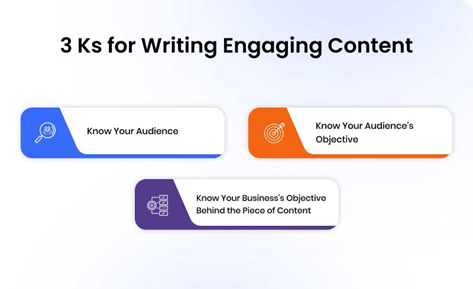SHARE

Content marketing has become essential for businesses to connect with their target audience and drive customer engagement. Creating an effective content marketing strategy is crucial for success in today’s digital landscape. In this article, we will explore the basics of content marketing and provide a step-by-step guide on creating a strategy that will capture your audience’s attention and help you achieve your business objectives.
[thrive_leads id=’8342′]
Understanding The Basics of Content Marketing
Before diving into the specifics of creating a strategy, it’s essential to clearly understand what content marketing is and why it’s crucial for your business. Content marketing is a strategic approach to creating and distributing valuable, relevant, consistent content to attract and retain a clearly defined audience.
It helps build brand awareness, establish thought leadership, and drive customer engagement.
Content marketing plays a crucial role in your overall marketing strategy. It helps you position yourself as an expert in your industry and builds trust with your audience.
By creating and sharing valuable content, you can establish your brand as a go-to resource for information, ultimately leading to increased sales and customer loyalty.
Now, let’s delve deeper into the various aspects of content marketing.
One of the critical elements of a successful content marketing strategy is understanding your target audience. By identifying their needs, interests, and pain points, you can create content that resonates with them and solves their problems.
Another critical aspect of content marketing is consistency. More is needed to create one great piece of content and expect instant results. Consistency is vital to building trust and credibility with your audience.
When it comes to content creation, quality is paramount. Your content should be well-researched, informative, and well-written.
It should provide value to your audience and address their specific needs. By focusing on quality, you can differentiate yourself from your competitors and position your brand as a trusted authority in your industry.
In addition to creating valuable content, it’s essential to distribute it effectively. This involves choosing the channels to reach your target audience and optimising your content for maximum visibility.
Whether through social media, email marketing, or search engine optimisation, the key is to reach your audience where they are and make it easy for them to consume and share your content.
Measuring the effectiveness of your content marketing efforts is crucial by tracking key metrics such as website traffic, engagement, and conversions. This data can help you refine your strategy and make informed decisions to improve your results.
Content marketing is a powerful tool to help your business stand out in a crowded marketplace. Creating valuable, relevant, consistent content can attract and retain a loyal audience, establish thought leadership, and drive customer engagement.
So, take the time to understand your audience, create high-quality content, distribute it effectively, and measure your results. With a well-executed content marketing strategy, the possibilities for your business are endless.
 Setting Up Your Content Marketing Goals
Setting Up Your Content Marketing Goals
Before starting your content marketing efforts, it’s essential to identify your business objectives and align your content marketing goals with them. Your content marketing goals should support and contribute to your overall business goals. These goals can vary depending on your industry and target audience, but some common objectives include:
1. Increasing Brand Awareness
One of the key goals of content marketing is to increase brand awareness. Creating valuable and engaging content can establish your brand as a thought leader in your industry. This can help you gain visibility and recognition among your target audience.
3. Generating Leads
Another important goal of content marketing is to generate leads. You can attract potential customers and capture their contact information by providing valuable content that addresses your target audience’s pain points and challenges. This can help you build a database of leads you can nurture and convert into customers.
5. Driving Website Traffic
Content marketing is also a powerful tool for driving website traffic. Creating high-quality content optimised for search engines can attract organic traffic to your website. This can increase your visibility in search engine results pages and drive more potential customers to your site.
7. Improving Search Engine Rankings
Improving search engine rankings is a crucial goal for many businesses. Creating relevant and optimised content can improve your website’s visibility in search engine results pages. This can help you attract organic traffic and increase your chances of reaching potential customers.
9. Building Customer Loyalty
Content marketing is not only about attracting new customers but also about building customer loyalty. By consistently providing valuable and relevant content to your existing customers, you can strengthen your relationship with them and encourage repeat business. This can lead to increased customer loyalty and advocacy for your brand.
Setting clear and measurable goals ensures that your content marketing efforts are focused and aligned with your overall business strategy.
 Identifying Your Target Audience
Identifying Your Target Audience
Understanding your target audience is crucial for creating content that resonates with them. Conducting audience research allows you to gain insights into their demographics, needs, preferences, and pain points.
This knowledge will help you create tailored content that effectively addresses their needs and provides value.
Creating audience personas is an effective way to visualise and understand your target audience. A persona is a fictional representation of your ideal customer, and it helps you connect with your audience on a deeper level.
By creating detailed personas, you can tailor your content to suit their interests, preferences, and behaviours.
When conducting audience research, it’s essential to consider various factors that can influence your target audience’s behaviour and preferences.
These factors may include age, gender, location, education level, occupation, and cultural background. By analysing these factors, you can better understand your audience’s motivations and desires.
For example, your target audience consists of young professionals in urban areas. In that case, they have a higher disposable income and are more likely to be tech-savvy. This information can guide your content creation process, allowing you to create engaging and relevant content that resonates with this specific audience segment.
Understanding your audience’s pain points is crucial for creating content that addresses their needs. By identifying their challenges and problems, you can provide valuable solutions and position yourself as a trusted authority in your industry.
For instance, if you’re targeting small business owners, you may discover they need help with time management and finding effective marketing strategies on a limited budget.
By addressing these pain points in your content, such as providing time-saving tips or cost-effective marketing tactics, you can establish yourself as a valuable resource for this audience.
Furthermore, keeping up with your industry’s latest trends and developments is essential for creating content that resonates with your audience. By staying informed, you can provide up-to-date information and insights that are relevant and valuable to your target audience.
For example, if you’re in the fitness industry, your audience may be interested in the latest workout trends, nutrition tips, and wellness practices.
By incorporating these trends into your content, such as creating workout routines based on popular fitness trends or sharing healthy recipes, you can capture your audience’s attention and keep them engaged.
Knowing your audience is fundamental to creating compelling content. By conducting audience research, creating detailed personas, understanding their motivations and pain points, and staying informed about industry trends, you can create tailored content that resonates with your target audience and provides value.
So, take the time to get to know your audience and craft content that speaks directly to them.
 Developing A Content Marketing Plan
Developing A Content Marketing Plan
Once you clearly understand your audience and goals, it’s time to develop a comprehensive content marketing plan. This plan will outline the strategies, tactics, and resources you will use to achieve your content marketing objectives.
Start by identifying the types of content that resonate with your audience and align with your business goals. This could include blog posts, videos, infographics, case studies, podcasts, and more. Consider the format, tone, and style that will best engage your audience and deliver your message effectively.
Delving deeper into content marketing is crucial to fully grasp its potential. Content marketing has become vital to modern business strategies, allowing companies to connect with their target audience more personally.
By creating valuable and informative content, businesses can establish themselves as industry experts and build trust with their customers.
It is essential to understand the psychology behind content consumption. People constantly seek information and entertainment, and by providing them with captivating content, you can capture their attention and keep them engaged.
This can lead to increased brand awareness, customer loyalty, and higher conversion rates.
Next, outline the key topics and themes you want to cover in your content. Conduct keyword research to identify relevant search terms and phrases your target audience uses. This will help optimise your content for search engines and attract organic traffic.
Moreover, staying up to date with the latest trends and industry news is essential. By incorporating current topics into your content, you can position your brand as a thought leader and stay ahead of the competition.
Additionally, by regularly monitoring and analysing your content performance, you can identify areas for improvement and refine your content marketing strategy.
Finally, determine the channels and platforms where you will distribute your content. This could include your website, social media platforms, email newsletters, and third-party publications.
Each channel has its nuances, so tailor your content and messaging accordingly.
Furthermore, social media platforms provide a unique opportunity to engage with your audience in real time. You can foster community and strengthen your brand’s reputation by actively participating in conversations and responding to comments.
Effectively reach and connect with your target audience and drive business growth by creating valuable and engaging content, optimising it for search engines, and distributing it through various channels.
 How To Create Engaging Content
How To Create Engaging Content
Now that you have a plan, it’s time to create compelling content to captivate your audience and drive engagement. Here are some tips to produce engaging content:
● Focus on storytelling
Share compelling stories that resonate with your audience and evoke emotion. Create a narrative that captivates their attention and keeps them returning for more.
● Provide value
Your content should provide value to your audience. Whether educational, informative, or entertaining, ensure your content meets their needs and solves their problems.
● Use visuals
Incorporate images, videos, and infographics to make your content more engaging and memorable.
● Encourage interaction
Include calls to action in your content to encourage your audience to engage with your brand. This could be commenting on a blog post, sharing a social media post, or subscribing to an email newsletter.
● Optimise for SEO
Ensure your content is optimised for search engines by incorporating relevant keywords, meta-tags, and descriptive URLs. This will help improve your search engine rankings and increase organic traffic.
By following these tips, you can create content that captures your audience’s attention, drives meaningful engagement, and helps you achieve your content marketing goals.
Conclusion
In conclusion, creating an effective content marketing strategy requires a deep understanding of your audience, clear goals, and a well-defined plan.
Through the steps outlined in this article, you can develop a strategy that will help you attract and retain your target audience, establish your brand as an industry authority, and drive long-term business success.
At 2Stallions, we’re more than just a digital marketing agency; we’re your partners in creating compelling content that resonates with your audience. We understand the challenges and opportunities that content marketing offers, and we’re here to help you navigate them.
Ready to take your content marketing game to the next level? Let’s work together to develop a strategy that drives engagement, builds brand loyalty, and delivers results.
Don’t miss out on the power of effective content marketing – consult with 2Stallions today and embark on a journey towards digital success. Your audience is waiting to hear your story; it’s time to tell it correctly.
Frequently Asked Questions About Content Marketing Strategy
What Are Content Marketing Strategies
Content marketing strategies involve planning, creating, distributing, and measuring content to achieve specific business objectives, such as brand awareness, engagement, lead generation, or customer conversion. A successful strategy typically encompasses understanding the target audience, producing high-quality content tailored to them, distributing it through relevant channels, and evaluating performance metrics.
What Are The 5 Cs of Content Marketing
- Customer-centric: Focus on creating relevant and valuable content for your target audience.
- Consistency: Regularly produce and distribute content to stay top of mind and build audience trust.
- Credibility: Ensure your content is accurate, trustworthy, and showcases your expertise.
- Conversion: Design content that moves users through the buyer’s journey, ultimately driving desired actions.
- Channel: Utilise various distribution channels, from blogs and websites to social media and email, to effectively reach your audience.
What Are The 7 Steps of Content Marketing
- Goal Setting: Determine your goal (e.g., brand awareness, lead generation).
- Audience Analysis: Understand your target audience’s needs, preferences, and pain points.
- Content Audit: Review existing content to identify gaps and opportunities.
- Content Creation: Produce high-quality, relevant, and engaging content.
- Content Distribution: Share and promote your content through chosen channels.
- Engagement and Interaction: Engage with your audience, encouraging shares, comments, and feedback.
- Measurement and Analysis: Use analytics to evaluate the performance and refine your strategy.
What Is an Example of Content Marketing
A classic example of content marketing is the “Michelin Guide.” Initially created by the Michelin tyre company in 1900, the guide provided valuable information for motorists, including maps, repair instructions, and hotel and restaurant listings. By delivering valuable content, Michelin built trust and brand loyalty among its audience and increased the demand for cars (and, subsequently, tyres). Today, businesses use blogs, eBooks, infographics, podcasts, webinars, and more as content marketing initiatives.



 Setting Up Your Content Marketing Goals
Setting Up Your Content Marketing Goals Identifying Your Target Audience
Identifying Your Target Audience Developing A Content Marketing Plan
Developing A Content Marketing Plan How To Create Engaging Content
How To Create Engaging Content










